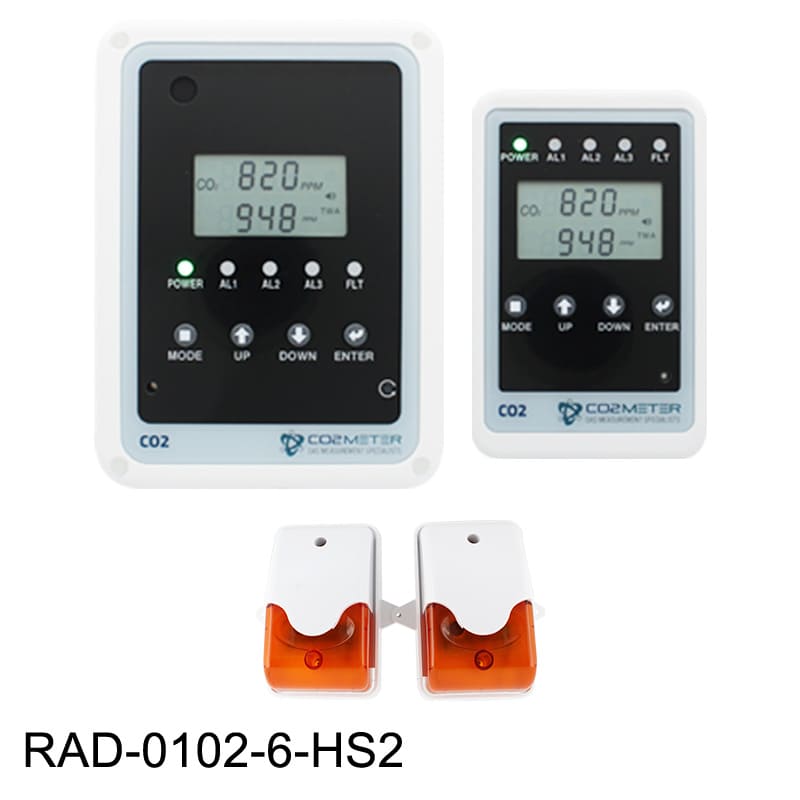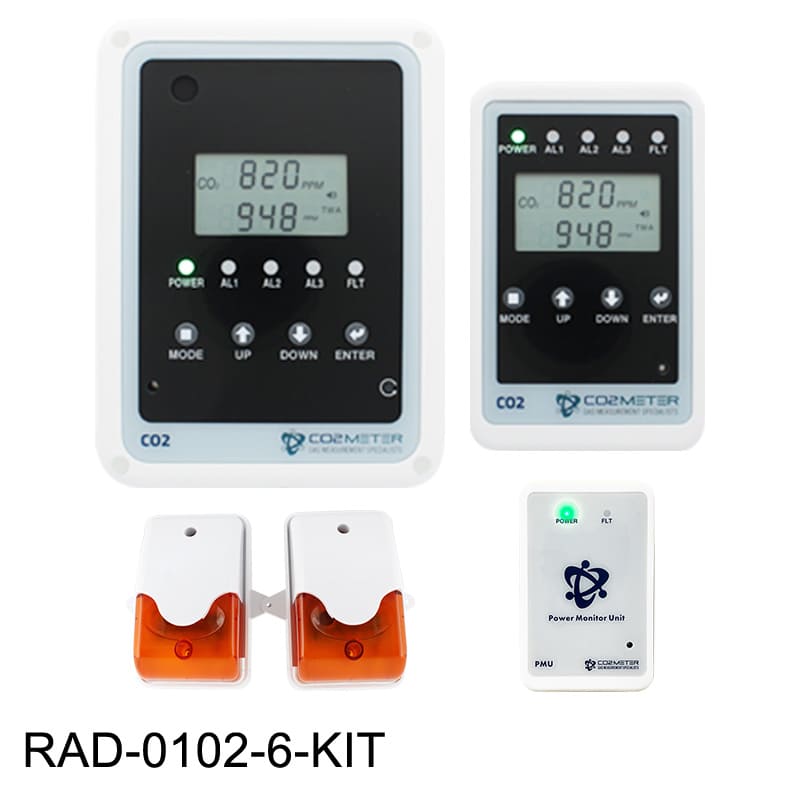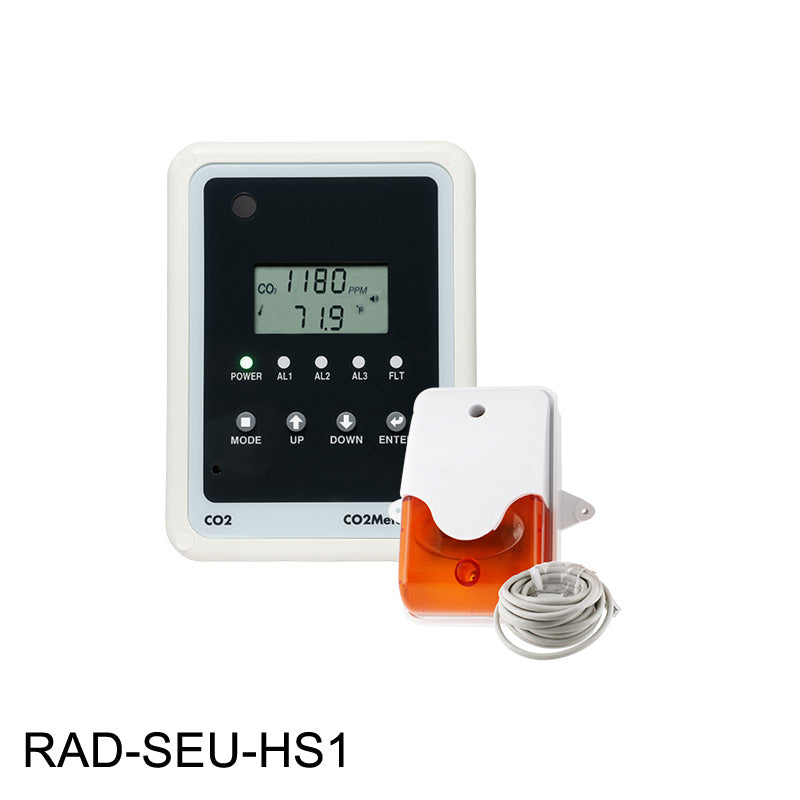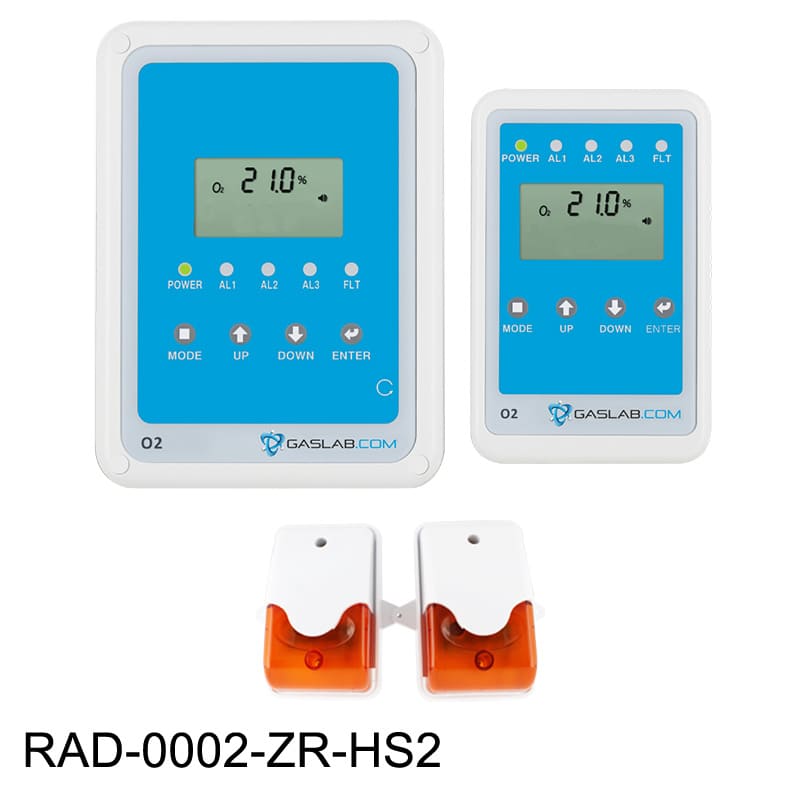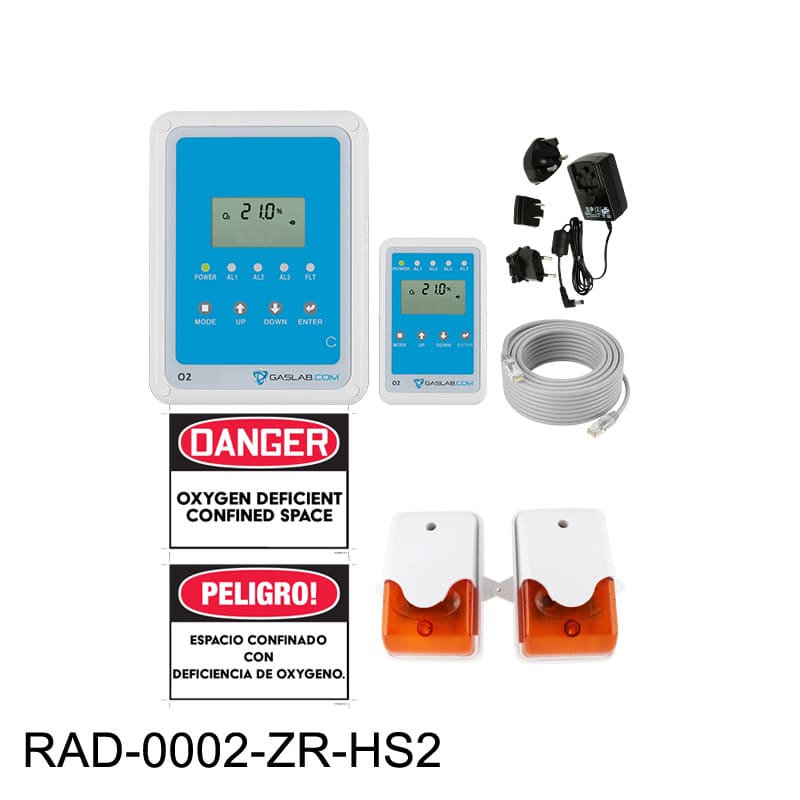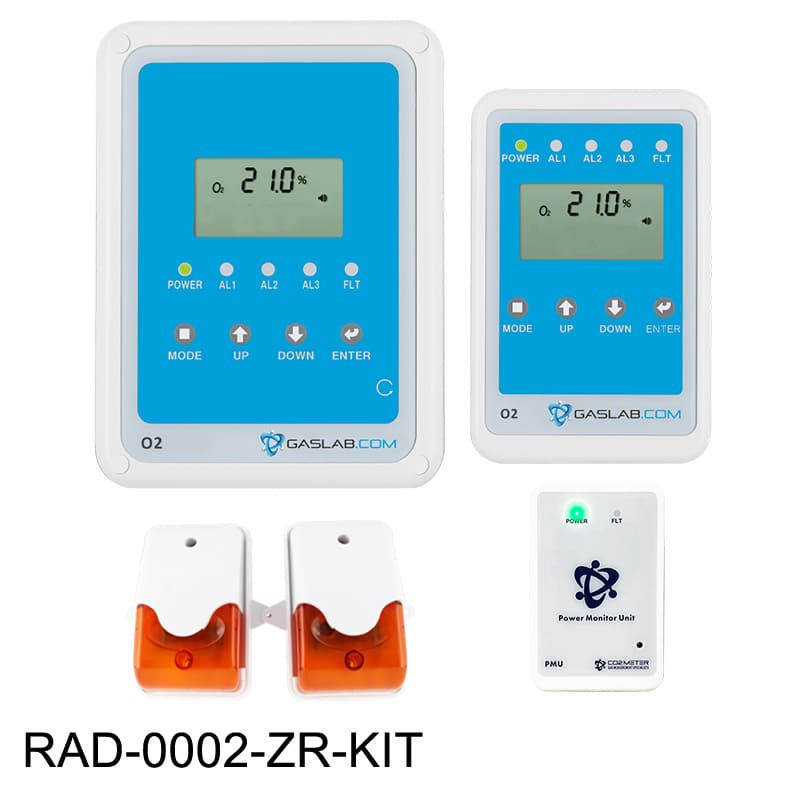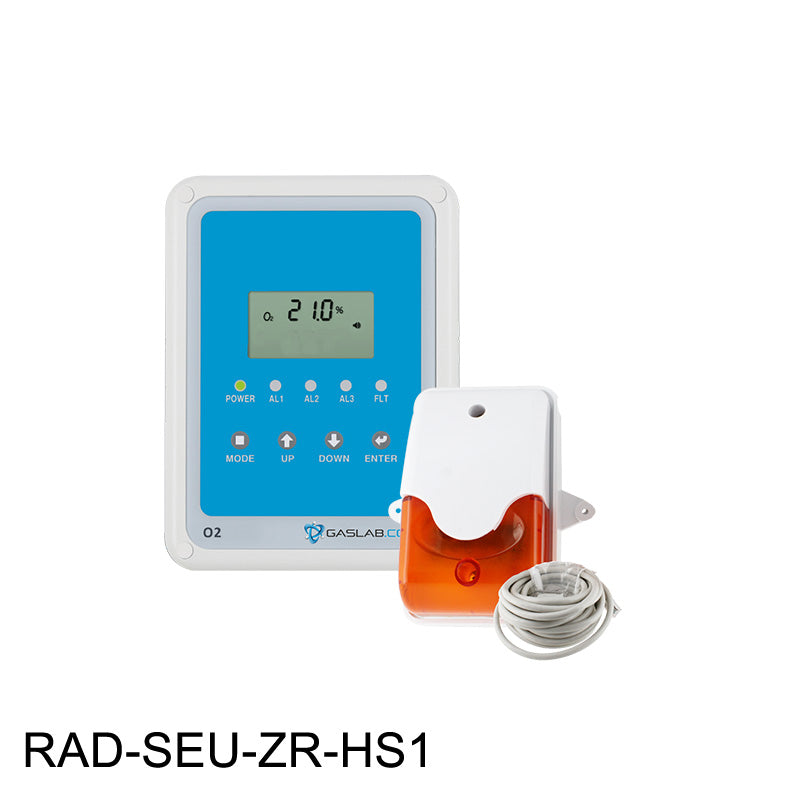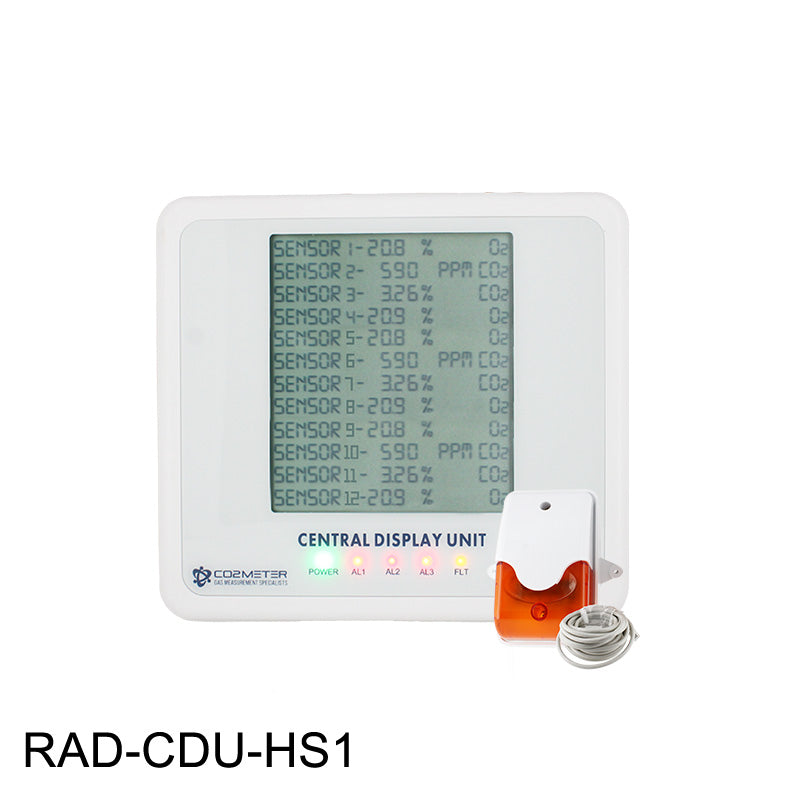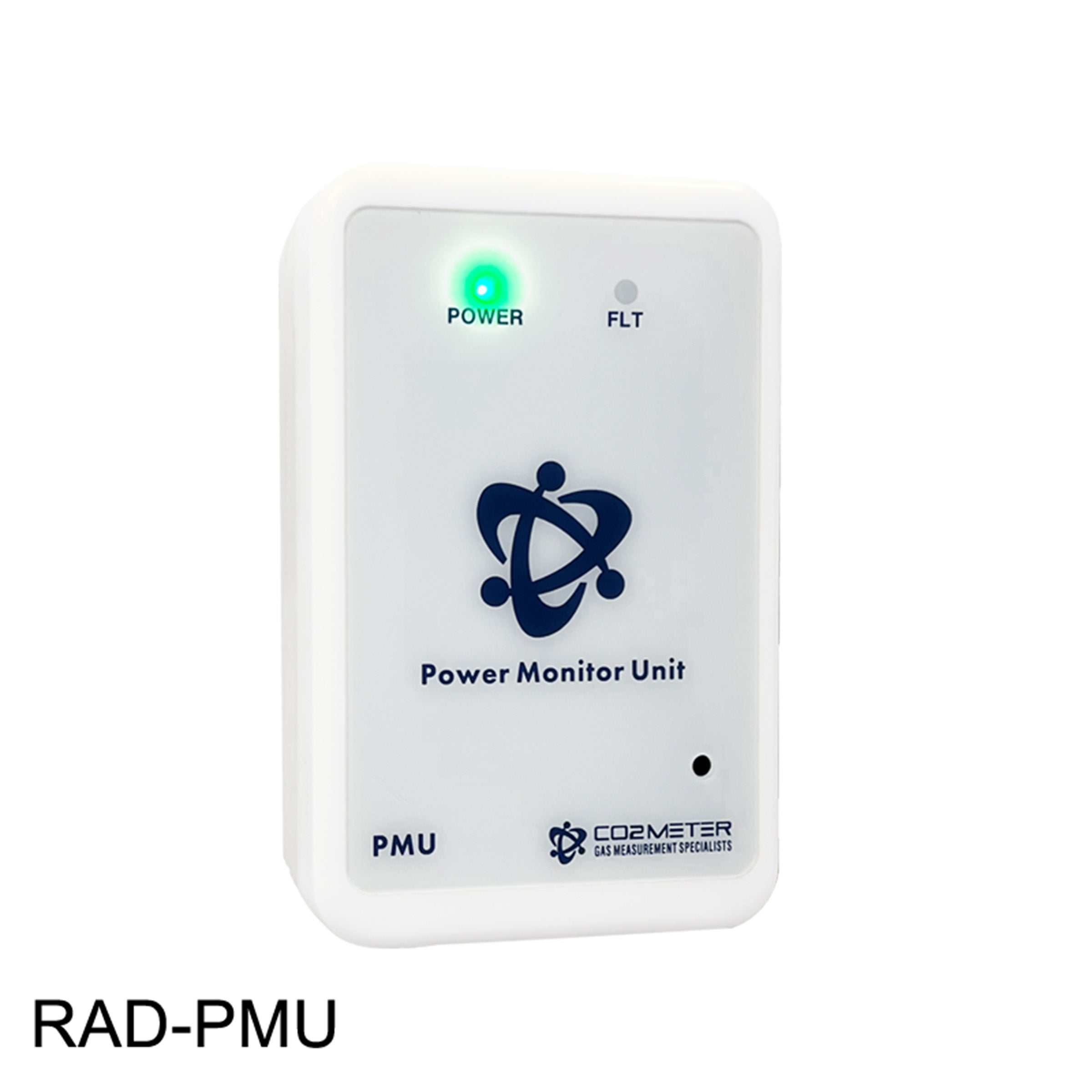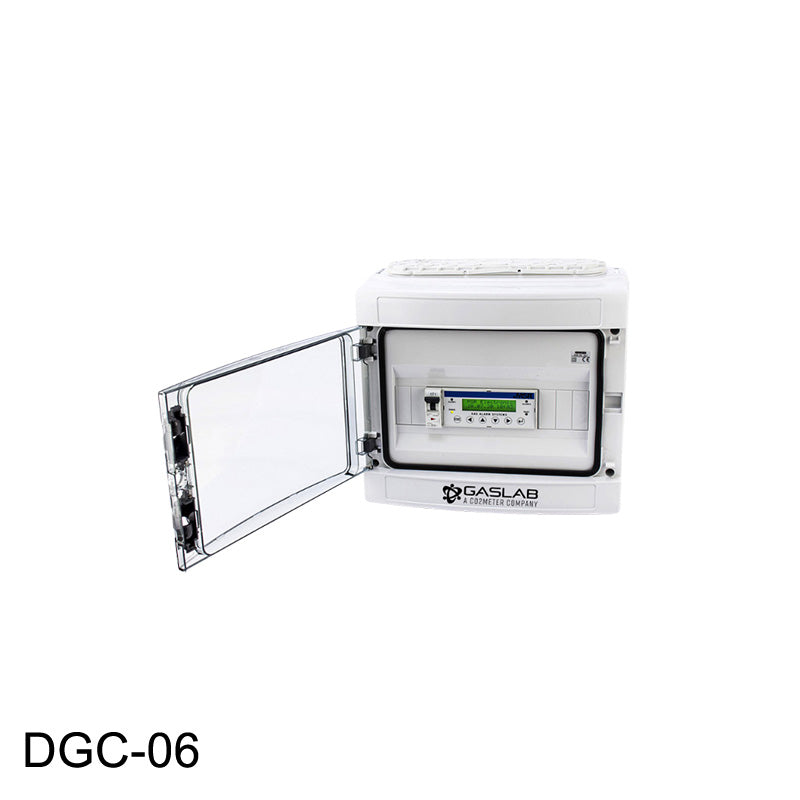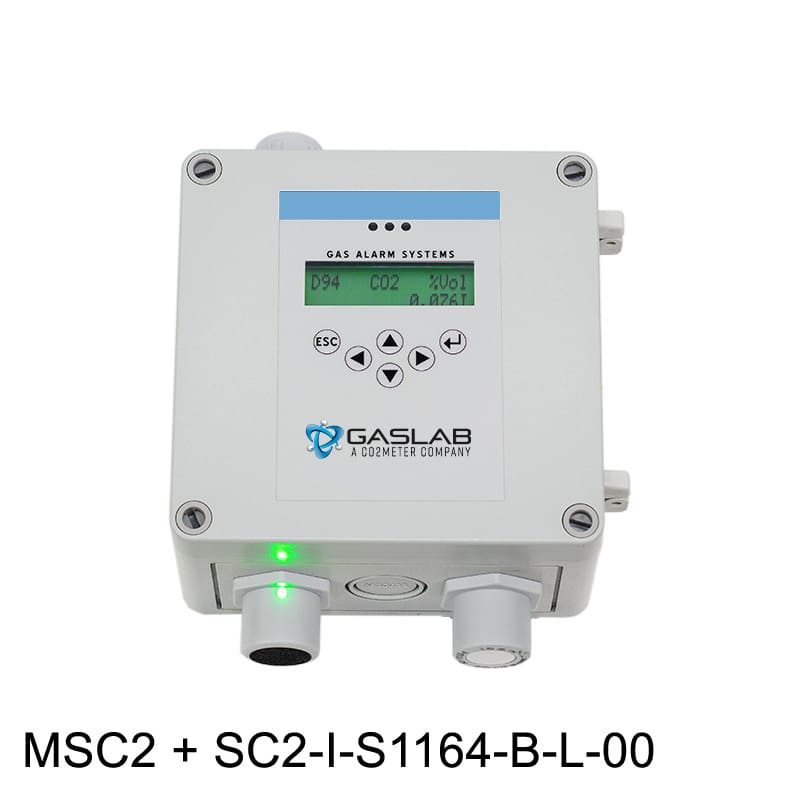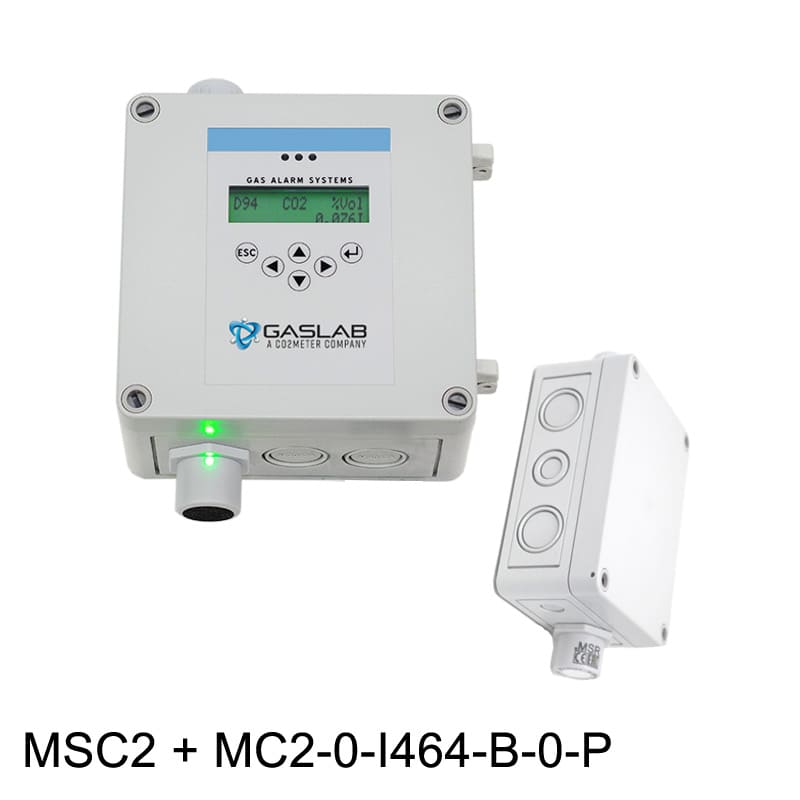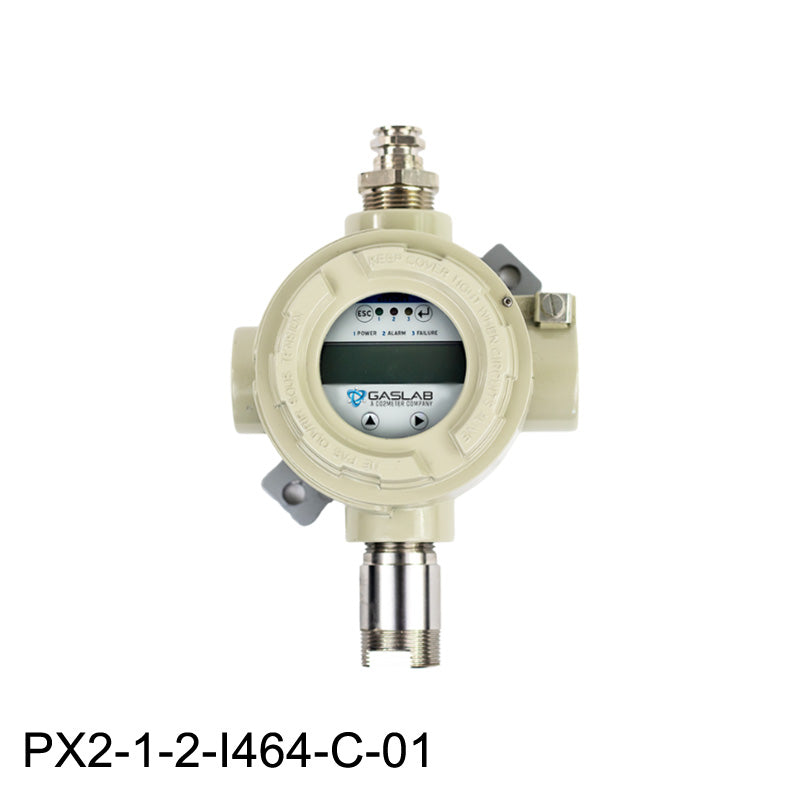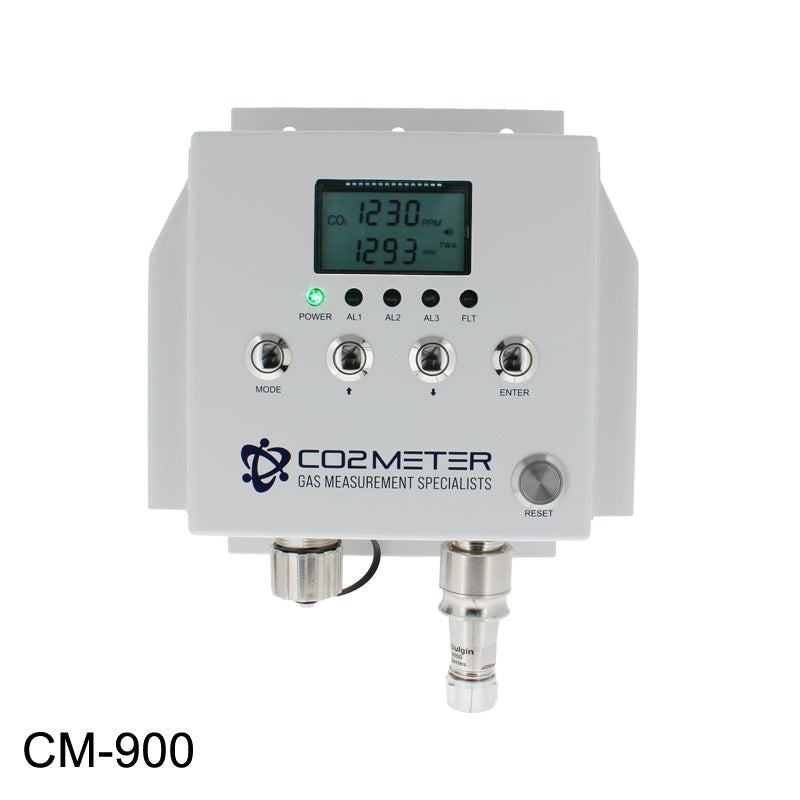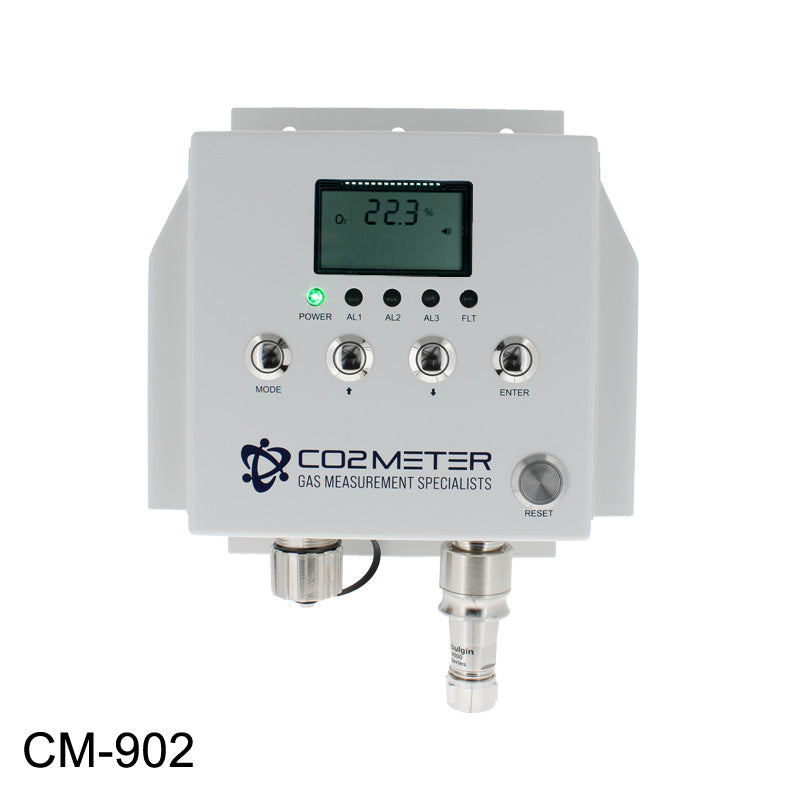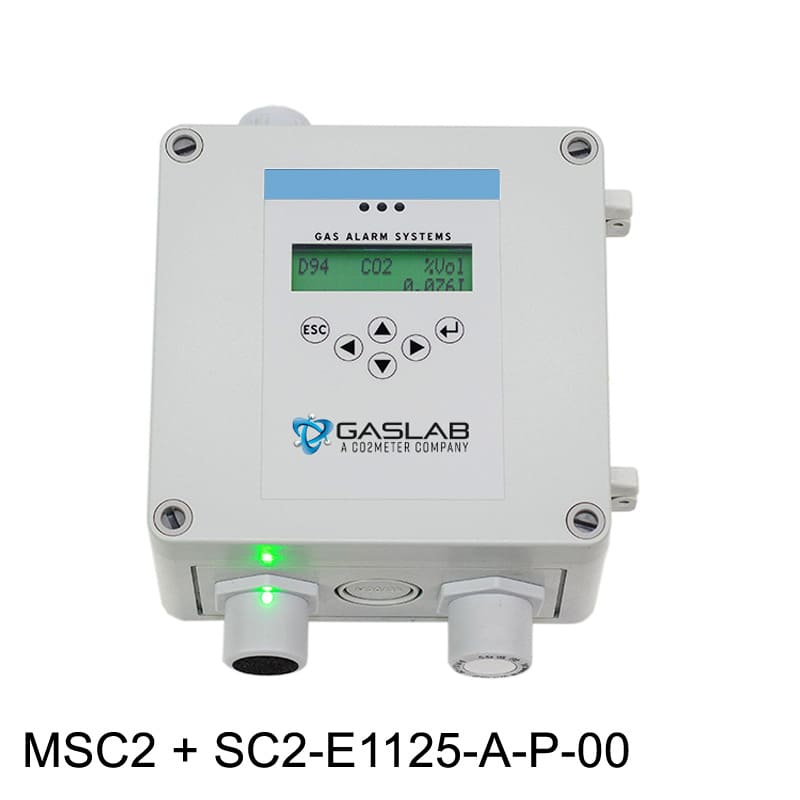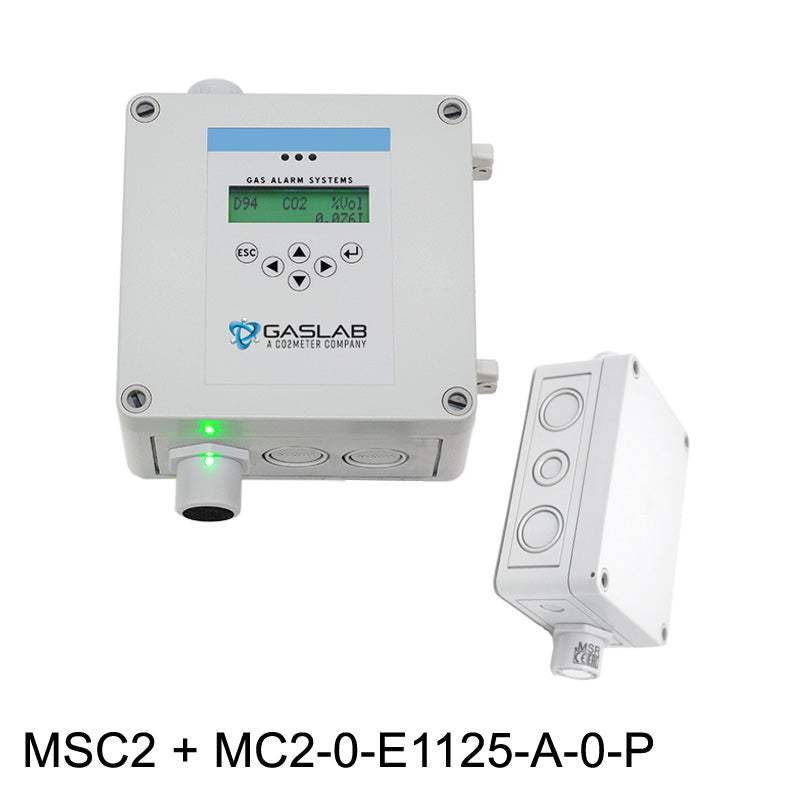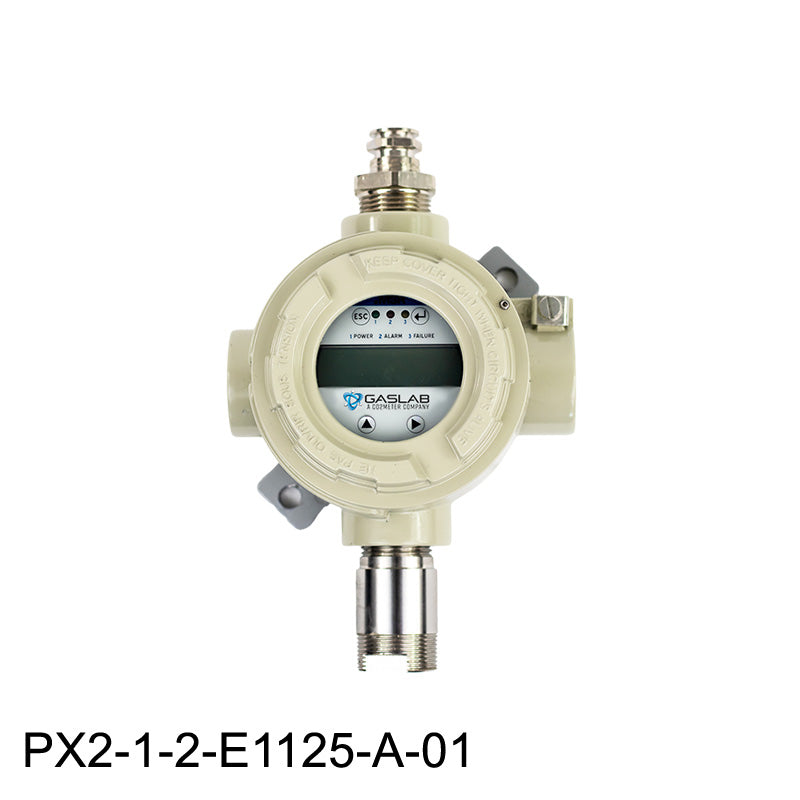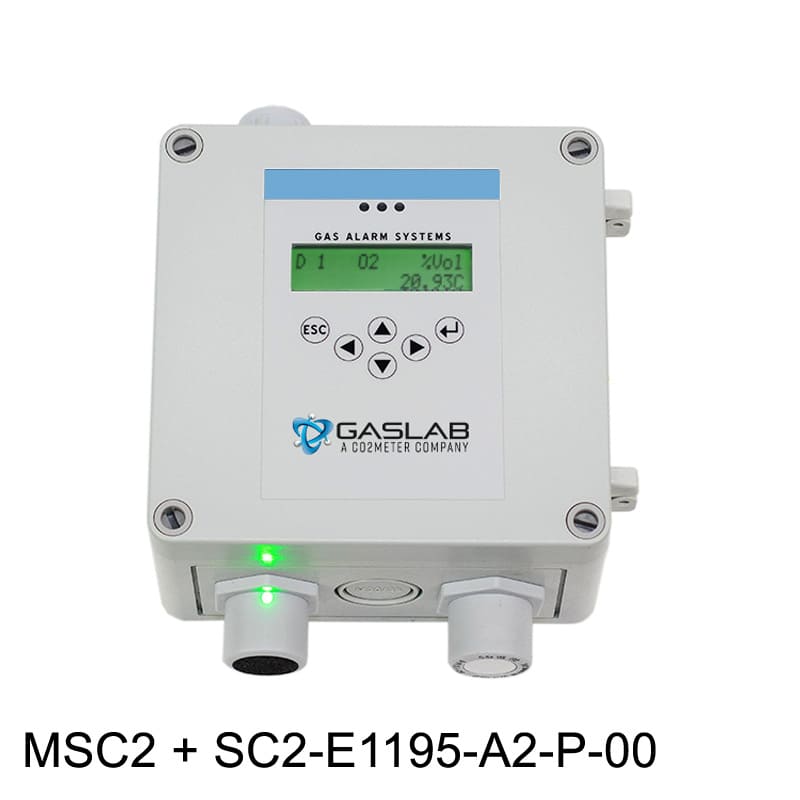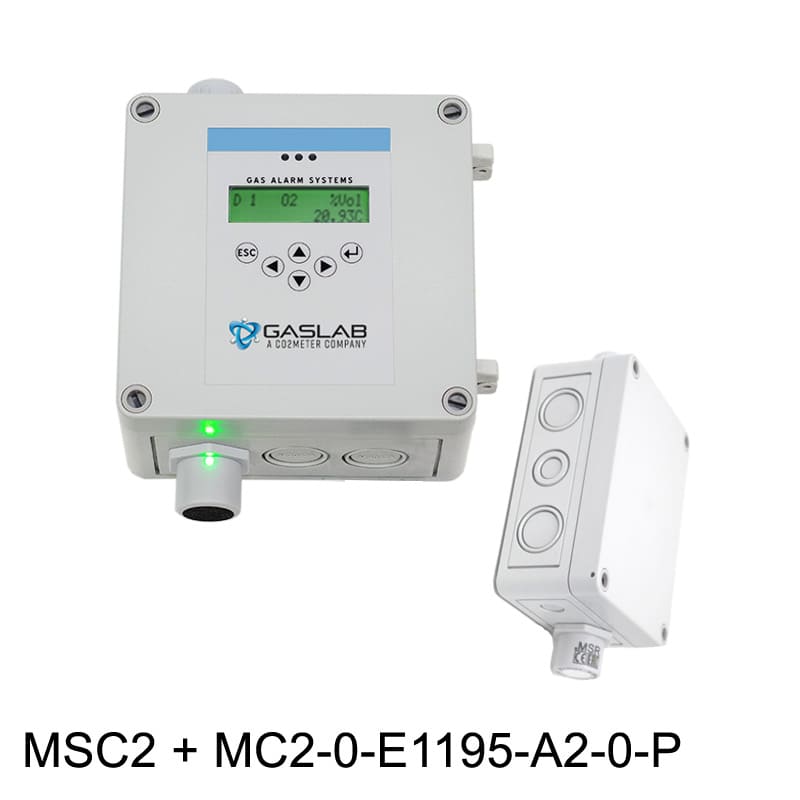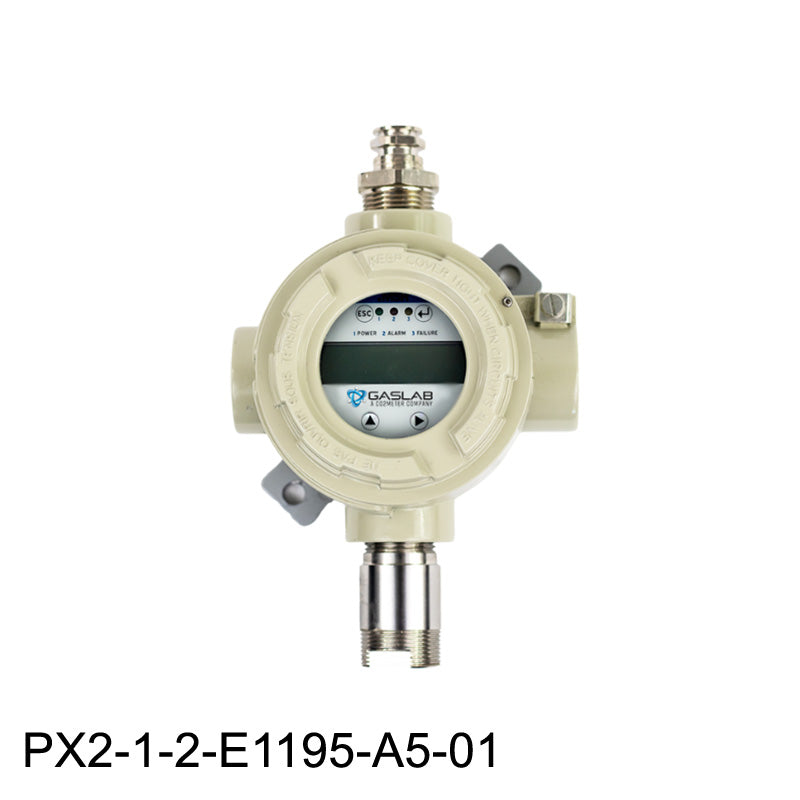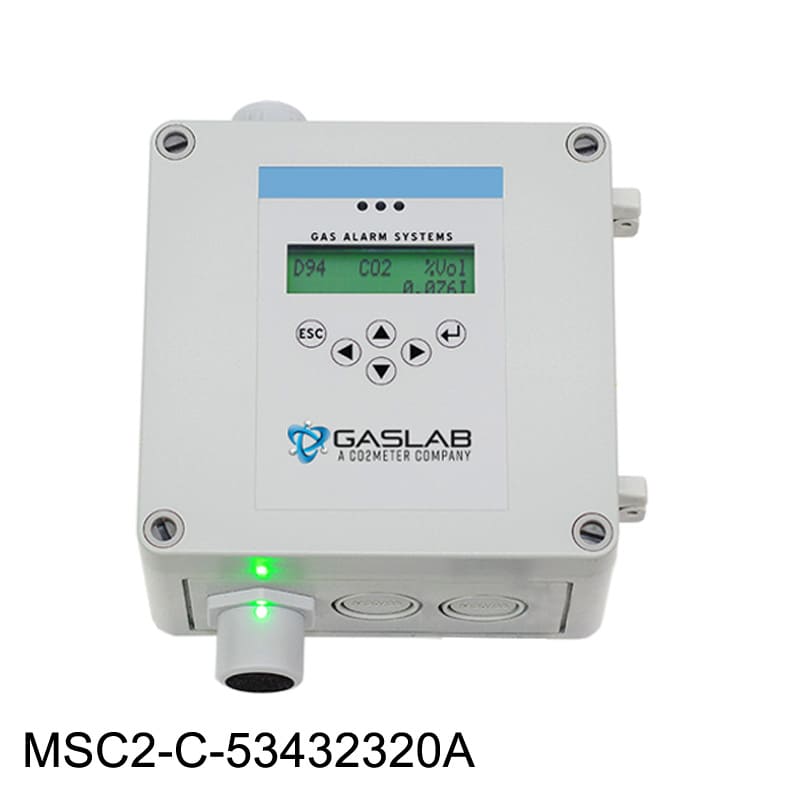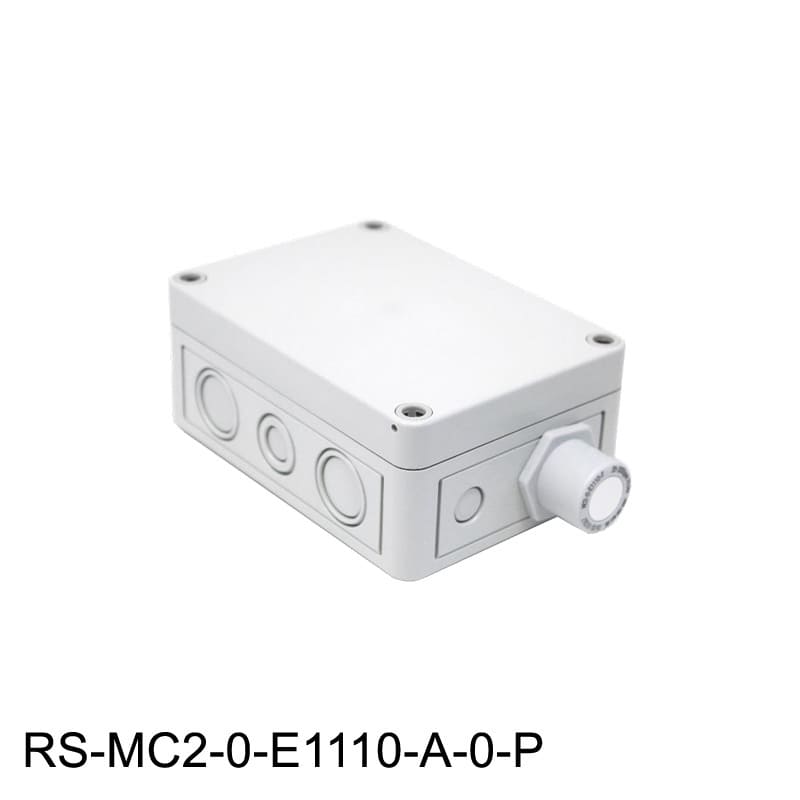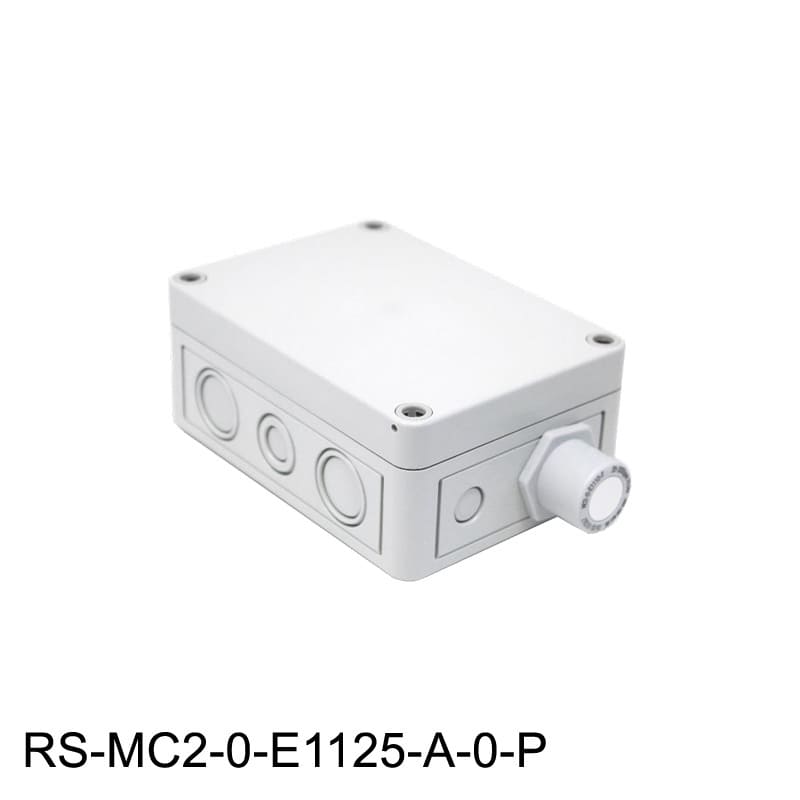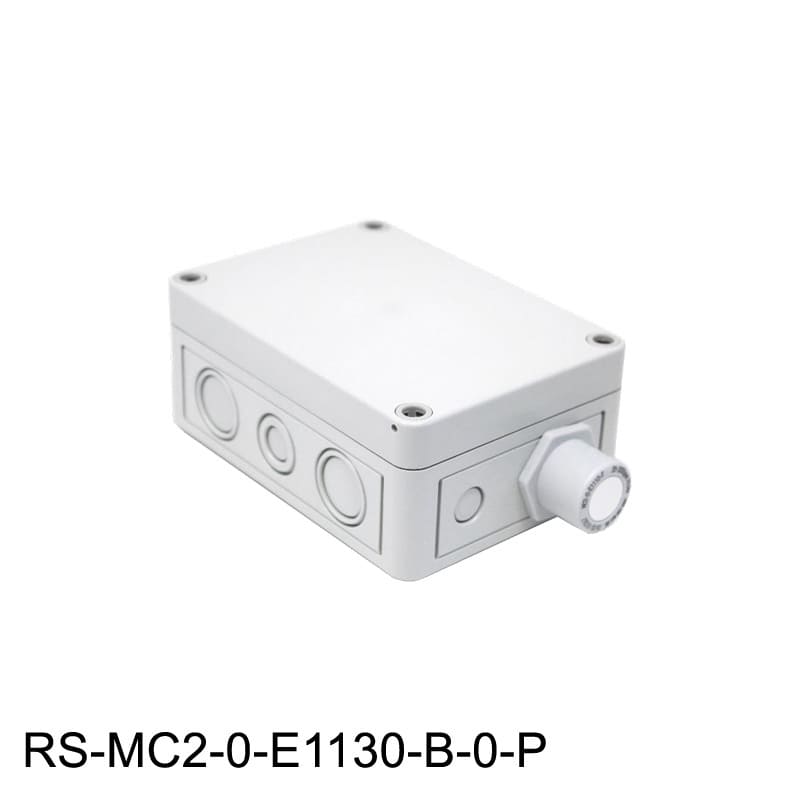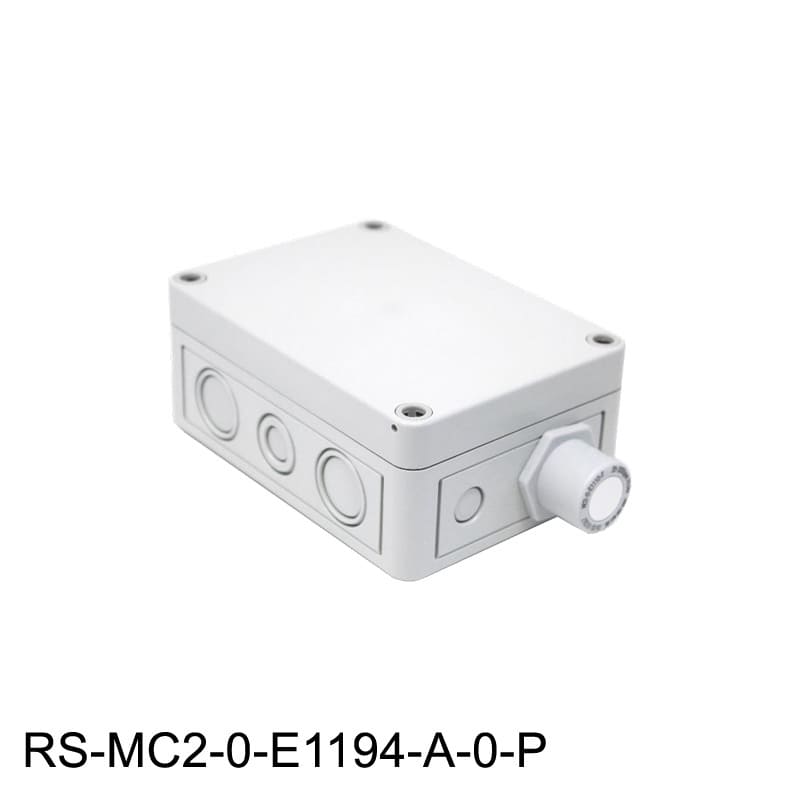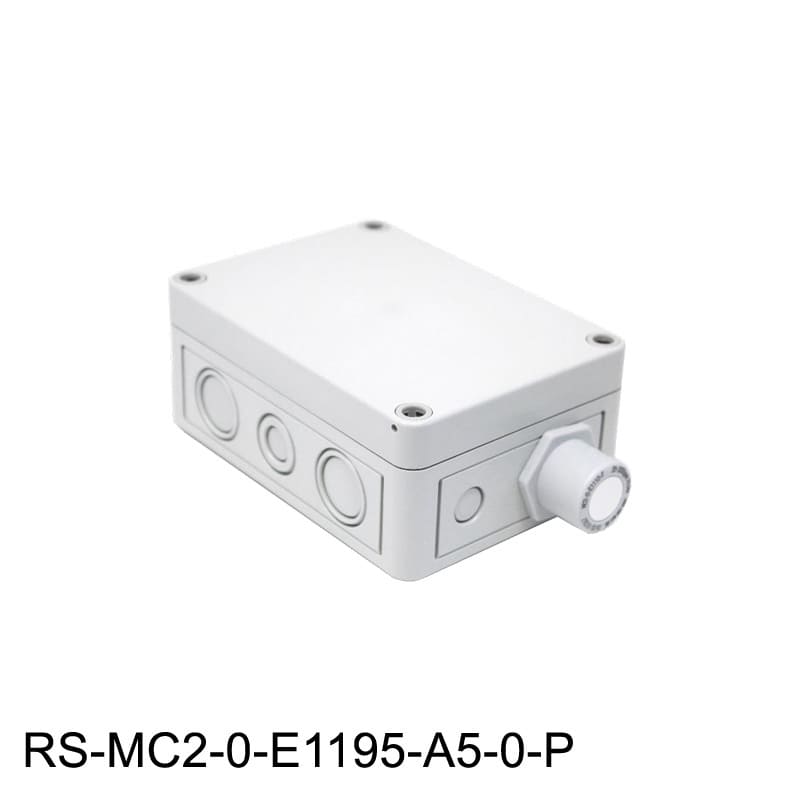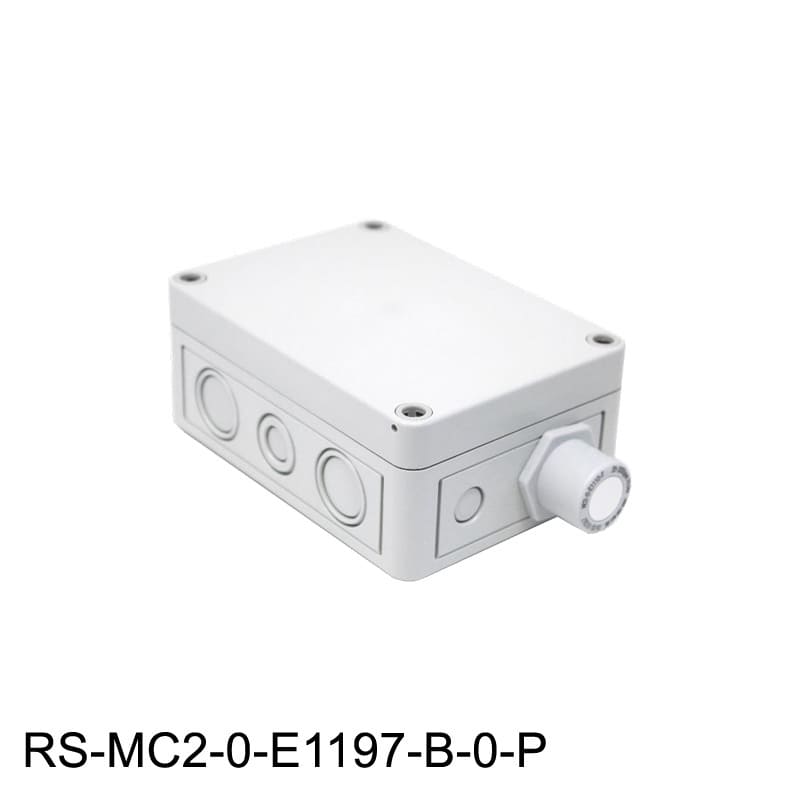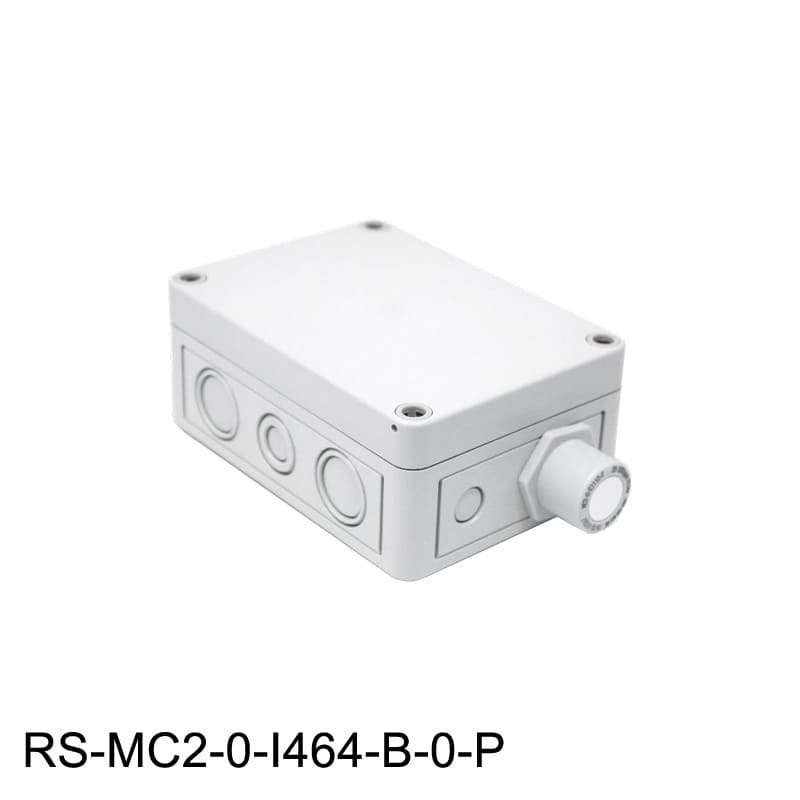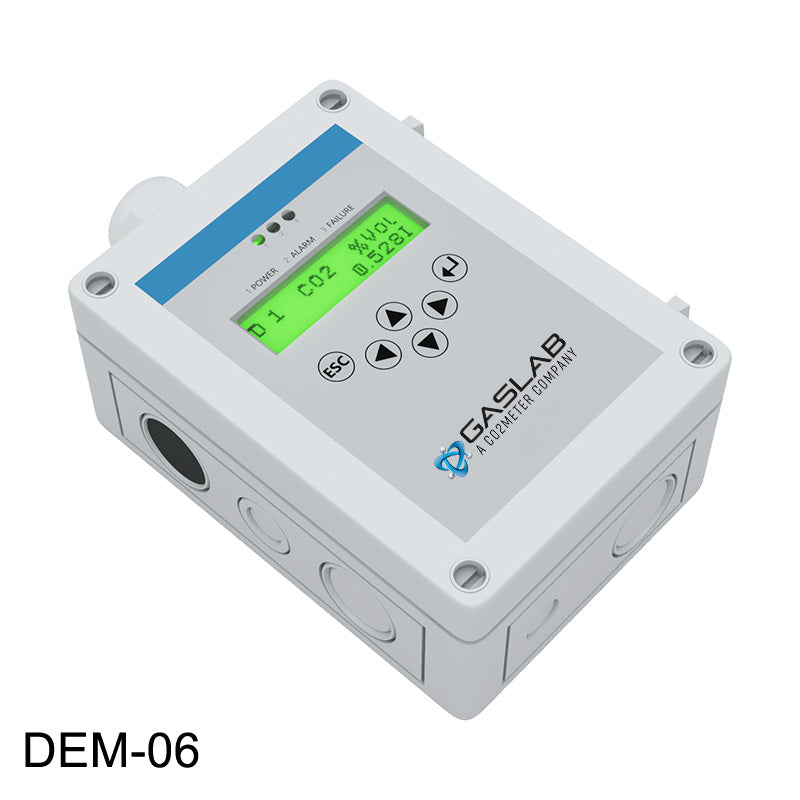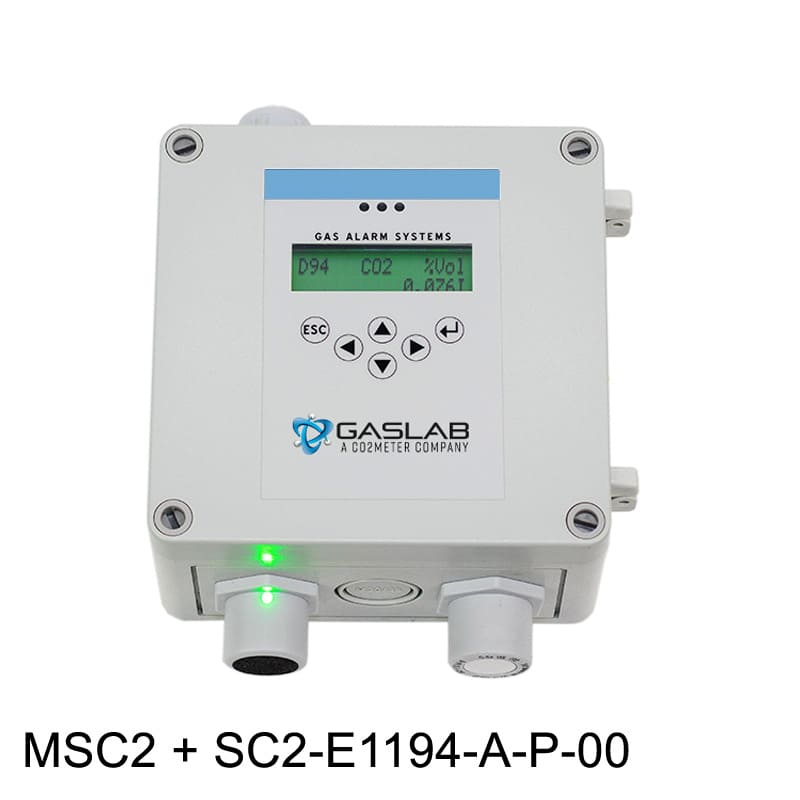Industrial Gas Safety
Ensure Industrial Safety with Gas Safety Monitors
When it comes to hazardous gas in the workplace, there are a combination of best practices and safety training that should be followed when working around potentially dangerous gases like carbon dioxide, oxygen, liquid nitrogen, carbon monoxide, and others.
Gas Safety Systems
A gas safety system is a system designed to monitor, detect and control toxic or hazardous gas levels in a given environment.
CO2Meter's gas safety systems let you monitor a wide range of gases and detect potential leaks in your facility. This helps to prevent accidents and ensure the safety of workers and the general public.
Employee Safety with Industrial Gas Safety Systems
Industrial gas safety systems are vital for ensuring employee safety by continuously monitoring gas levels and providing real-time alerts to prevent hazardous exposure. These systems help maintain a safe work environment, reduce accidents, and ensure compliance.
-
CO2 Safety Alarm
Remote Carbon Dioxide CO2 Storage Safety 3 Alarm
The Remote Carbon Dioxide (CO2) Storage Safety Alarm and Horn Strobes (formerly known as the RAD-0102-6) is designed to protect individuals...
4.77 / 5.0
(26) ( 26 )
$669.00 USD$669.00 USD$669.00 USD -
CO2 Safety Alarm
Complete CO2 Storage Safety Monitoring Kit
The Complete CO2 Storage Safety Monitoring Kit includes everything you need to meet OSHA and fire code requirements while protecting...
$849.00 USD$849.00 USD$849.00 USD -
CO2 Safety Alarm
Single Sensor CO2 Monitoring System and Horn Strobe
The Single Sensor CO2 Monitoring System and Horn Strobe is a compact safety solution that includes CO2Meter’s reliable CO2 storage...
$609.00 USD$609.00 USD$609.00 USD -
fixed/wall mount
Oxygen Deficiency Depletion Safety Alarm
The Oxygen Deficiency Depletion Safety Alarm and Horn Strobes (formerly known as the RAD-0002-ZR) is a 0-23% room oxygen monitor designed...
$1,649.00 USD$1,649.00 USD$1,649.00 USD -
fixed/wall mount
Complete O2 Deficiency Safety Monitoring Kit
The Complete O2 Deficiency Safety Monitoring Kit is a fully integrated O2 safety monitoring solution designed to detect hazardous oxygen, argon,...
$1,829.00 USD$1,829.00 USD$1,829.00 USD -
fixed/wall mount
Single Sensor O2 Deficiency Monitoring System and Horn Strobe
The Single Sensor O2 Deficiency Monitoring System and Horn Strobe (RAD-SEU-ZR-HS1) includes CO2Meter’s remote oxygen deficiency sensor unit (no remote display)...
$1,029.00 USD$1,029.00 USD$1,029.00 USD -
fixed/wall mount
Central Display Unit and Horn Strobe for Gas Safety Alarms
The Central Display Unit (CDU-HS1) for Gas Safety Alarms with Horn Strobe is designed to provide real-time visibility of CO2 or...
$399.00 USD$399.00 USD$399.00 USD -
fixed/wall mount
Power Monitor Unit for Gas Safety Alarms
The Power Monitor Unit for Gas Safety Alarms (RAD-PMU) is designed as a critical safety device to ensure uninterrupted gas detection...
$199.00 USD$199.00 USD$199.00 USD -
fixed/wall mount
Digital Multi-Gas Controller System
The DGC-06: Digital Multi-Gas Controller System is used for the monitoring and warning of toxic and combustible gases and vapors, as...
$5,453.86 USD$5,453.86 USD$5,453.86 USD -
fixed/wall mount
Fixed Carbon Dioxide (CO2) Gas Detector (0-5%)
The Fixed Carbon Dioxide CO2 Gas Detector (MSC2 + SC2-I-S1164-B-L-00) is designed to protect individuals near toxic CO2 gas in...
$2,214.00 USD$2,214.00 USD$2,214.00 USD -
fixed/wall mount
Carbon Dioxide (CO2) Fixed Gas Detector w/ Remote Sensor (0-5%)
The Carbon Dioxide (CO2) Fixed Gas Detector w/ Remote Sensor (MSC2 + MC2-0-I464-B-0-P) is designed to protect individuals near toxic gases...
$2,339.00 USD$2,339.00 USD$2,339.00 USD -
fixed/wall mount
Carbon Dioxide (CO2) Combustible Fixed Gas Detector (0-5000ppm)
The Carbon Dioxide (CO2) Combustible Fixed Gas Detector (PX2-1-2-I464-C-01) is designed for continuous monitoring of CO2 gases between 0-5000ppm and...
$2,009.00 USD$2,009.00 USD$2,009.00 USD -
CO2 Monitor
CO2 Industrial Gas Detector
The CM-900: CO2 Industrial Fixed Gas Detector is a gas safety solution for industries that need to measure up to...
$1,439.00 USD$1,439.00 USD$1,439.00 USD -
CO2 Monitor
O2 Industrial Gas Detector
The CM-902 O2 Industrial Gas Detector is designed to protect individuals working near hazardous gases like nitrogen, argon, chlorine, propane, nitrous oxide, or...
$1,439.00 USD$1,439.00 USD$1,439.00 USD -
fixed/wall mount
Fixed Ammonia (NH3) Gas Detector (0-100ppm)
The Fixed Ammonia NH3 Gas Detector is designed to protect individuals near toxic and combustible gases, refrigerants, or oxygen in...
$1,809.00 USD$1,809.00 USD$1,809.00 USD -
fixed/wall mount
Ammonia (NH3) Fixed Gas Detector w/ Remote Sensor (0-100ppm)
The Fixed Ammonia (NH3) Gas Detector w/ Remote Sensor (MSC2 + MC2-0-E1125-A-0-P) is designed to protect individuals near toxic gases like...
$1,923.00 USD$1,923.00 USD$1,923.00 USD -
fixed/wall mount
Ammonia (NH3) Combustible Fixed Gas Detector (0-100ppm)
The Ammonia NH3 Combustible Fixed Gas Detector (PX2-1-2-E1125-A-01) is designed for continuous monitoring of ammonia toxic gases between 0-100ppm and vapors...
$2,190.00 USD$2,190.00 USD$2,190.00 USD -
fixed/wall mount
Fixed Oxygen (O2) Gas Detector (0-25%)
The Fixed Oxygen (O2) Gas Detector (MSC2 + SC2-E1195-A2-P-00) is designed to protect individuals near toxic gases in commercial and...
$1,519.00 USD$1,519.00 USD$1,519.00 USD -
fixed/wall mount
Oxygen (O2) Fixed Gas Detector w/ Remote Sensor (0-25%)
The Oxygen (O2) Fixed Gas Detector w/ Remote Sensor (MSC2 + MC2-0-E1195-A2-0-P) is designed to protect individuals near toxic gases...
$1,969.00 USD$1,969.00 USD$1,969.00 USD -
fixed/wall mount
Oxygen Combustible Fixed Gas Detector (0-25%)
The Oxygen Combustible Fixed Gas Detector (PX2-1-2-E1195-A5-01) is designed for continuous monitoring of toxic gases to prevent leaks in the range...
$2,079.00 USD$2,079.00 USD$2,079.00 USD -
fixed/wall mount
Fixed Multi-Gas Detector
The Fixed Multi-Gas Detector is designed to protect individuals near toxic, combustible, and hazardous gases, or oxygen in commercial and...
$1,140.00 USD$1,140.00 USD$1,140.00 USD -
Select optionsfixed/wall mount
Remote Sensor for Gaslab Multi-Gas Detector
Remote Sensors for the Gaslab Multi-Gas Detector are designed to measure combustible, toxic gases and oxygen as well as refrigerants....
$530.00 USD$724.00 USD$724.00 USD -
fixed/wall mount
Remote Door Entrance Module for Gaslab Safety Alarms
The DEM-06: Remote Door Entrance Module for Gaslab Safety Alarm is a cutting-edge solution designed to keep your facility safe and informed. Using...
$530.00 USD$530.00 USD$530.00 USD -
fixed/wall mount
Fixed Hydrogen (H2) Gas Detector (0-1000ppm)
The Fixed Hydrogen H2 Gas Detector (MSC2 + SC2-E1194-A-P-00) is designed to protect individuals near toxic and combustible gases. This fixed...
$1,784.00 USD$1,784.00 USD$1,784.00 USD
Don't Take Our Word for it, Take Theirs

Matthew Weintraub
Plant Manager
"Your solutions meet the code requirements and because of you our facility is much safer."
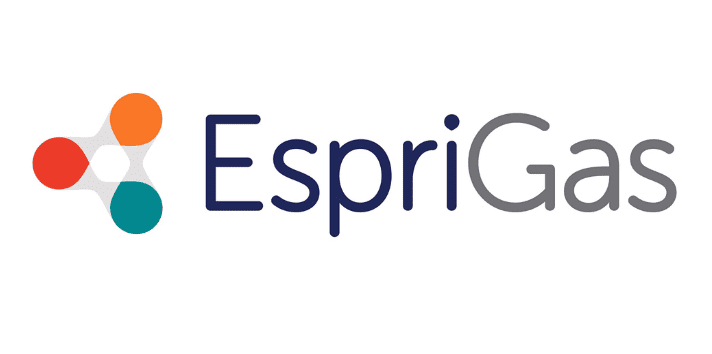
Angela Ihrig
Supply Chain Manager
"CO2Meter has helped protect 150+ of our customers sites and ensure they are compliant and safe."
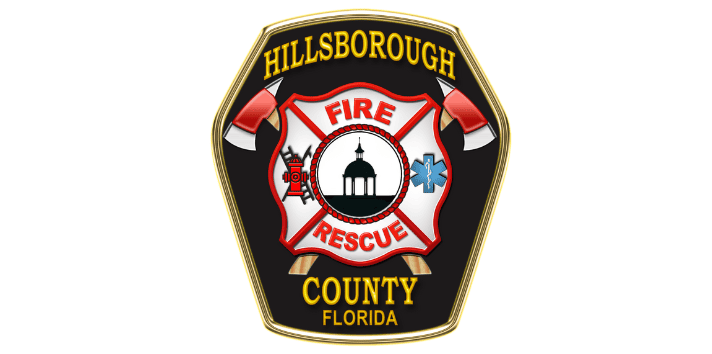
Michael Hudkins, CFPS
Fire Plans Examiner/Fire Inspector II
"I would recommend CO2Meter gas training to anyone, it inspired us to be keenly aware of what to inspect."

Keith Isoldi
Chief Operating Officer
"I have always worked with CO2Meter because they are the industry leader."
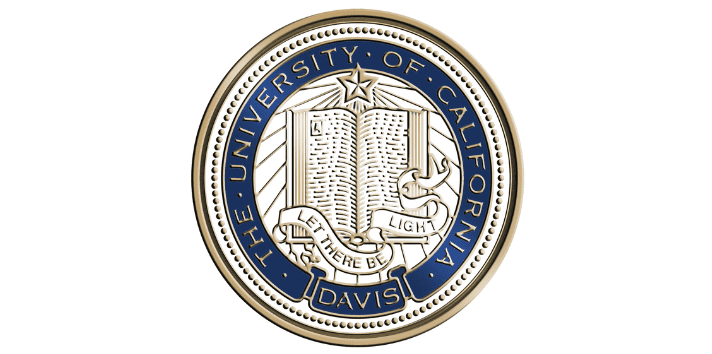
Kelly Kissock
Faculty Director
"Easy to install, Our CO2 tank gassed off and the meter near it worked perfectly!"
Stay Informed with Our Latest Updates
Subscribe to our newsletter for the latest news, product updates, and industry insights.
CO2Meter is working with our global supply chain to minimize disruptions
Due to imposed tariffs, Quotes will be honored for 24 hours and may require a revised PO
CO2Meter is working with our global supply chain to minimize disruptions
Due to imposed tariffs, Quotes will be honored for 24 hours and may require a revised PO
CO2Meter is working with our global supply chain to minimize disruptions
Due to imposed tariffs, Quotes will be honored for 24 hours and may require a revised PO
CO2Meter is working with our global supply chain to minimize disruptions
Due to imposed tariffs, Quotes will be honored for 24 hours and may require a revised PO
CO2Meter is working with our global supply chain to minimize disruptions
Due to imposed tariffs, Quotes will be honored for 24 hours and may require a revised PO
CO2Meter is working with our global supply chain to minimize disruptions
Due to imposed tariffs, Quotes will be honored for 24 hours and may require a revised PO
CO2Meter is working with our global supply chain to minimize disruptions
Due to imposed tariffs, Quotes will be honored for 24 hours and may require a revised PO
CO2Meter is working with our global supply chain to minimize disruptions
Due to imposed tariffs, Quotes will be honored for 24 hours and may require a revised PO
CO2Meter is working with our global supply chain to minimize disruptions
Due to imposed tariffs, Quotes will be honored for 24 hours and may require a revised PO
CO2Meter is working with our global supply chain to minimize disruptions
Due to imposed tariffs, Quotes will be honored for 24 hours and may require a revised PO
CO2Meter is working with our global supply chain to minimize disruptions
Due to imposed tariffs, Quotes will be honored for 24 hours and may require a revised PO
CO2Meter is working with our global supply chain to minimize disruptions
Due to imposed tariffs, Quotes will be honored for 24 hours and may require a revised PO
CO2Meter is working with our global supply chain to minimize disruptions
Due to imposed tariffs, Quotes will be honored for 24 hours and may require a revised PO
CO2Meter is working with our global supply chain to minimize disruptions
Due to imposed tariffs, Quotes will be honored for 24 hours and may require a revised PO
CO2Meter is working with our global supply chain to minimize disruptions
Due to imposed tariffs, Quotes will be honored for 24 hours and may require a revised PO
CO2Meter is working with our global supply chain to minimize disruptions
Due to imposed tariffs, Quotes will be honored for 24 hours and may require a revised PO
CO2Meter is working with our global supply chain to minimize disruptions
Due to imposed tariffs, Quotes will be honored for 24 hours and may require a revised PO
CO2Meter is working with our global supply chain to minimize disruptions
Due to imposed tariffs, Quotes will be honored for 24 hours and may require a revised PO
CO2Meter is working with our global supply chain to minimize disruptions
Due to imposed tariffs, Quotes will be honored for 24 hours and may require a revised PO
CO2Meter is working with our global supply chain to minimize disruptions
Due to imposed tariffs, Quotes will be honored for 24 hours and may require a revised PO
CO2Meter is working with our global supply chain to minimize disruptions
Due to imposed tariffs, Quotes will be honored for 24 hours and may require a revised PO
CO2Meter is working with our global supply chain to minimize disruptions
Due to imposed tariffs, Quotes will be honored for 24 hours and may require a revised PO
CO2Meter is working with our global supply chain to minimize disruptions
Due to imposed tariffs, Quotes will be honored for 24 hours and may require a revised PO
CO2Meter is working with our global supply chain to minimize disruptions
Due to imposed tariffs, Quotes will be honored for 24 hours and may require a revised PO
CO2Meter is working with our global supply chain to minimize disruptions
Due to imposed tariffs, Quotes will be honored for 24 hours and may require a revised PO

